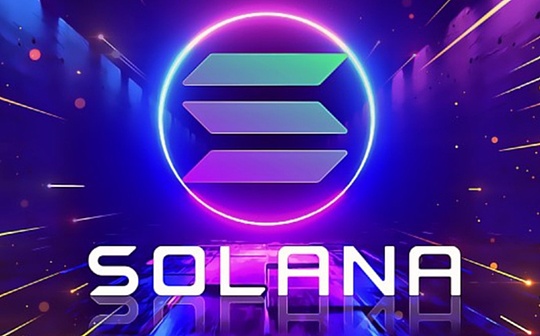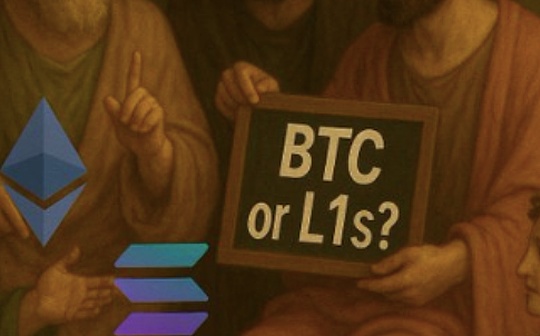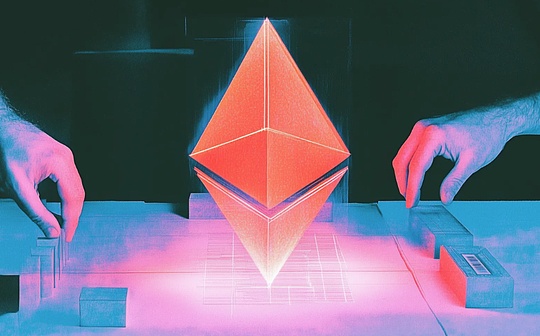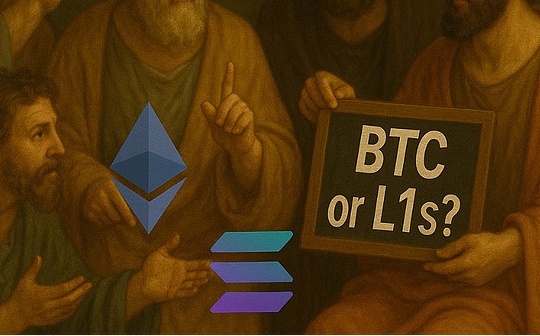
Author: YASH AGARWAL Source: Medium Translation: Good Ouba, Bit Chain Vision
A month ago, Vibhu, the founder of DRIP, the top consumer of Solana, made a remark, which caused people to discuss urgently.Drip distributes NFT from well -known artists every week through this platform.His remarks are:
Solana will have and requires L2 and/or Rollup solutions.
His frustration stems from DRIP to leak a lot of value (about 20,000 US dollars) to the bottom due to rising SOL prices and network congestion every week.The increase in Solana activities will lead to:
-
Beauty -Due to the combined, liquidity, capital and transaction volume increase
-
Disadvantages -high infrastructure costs, poor user experience, and network congestion
However, DRIP mainly uses Solana’s infrastructure to send millions of NFTs to thousands of wallets every week, and it will not benefit from high composite.The impact of Solana’s TVL growth and capital inflows on DRIP is small, and DRIP mainly bear the shortcomings such as high infrastructure costs.
Vibhu pointed out that “there is a decreasing income in combination.” He also noticed that due to the following reasons, the developer of Solana applied in private discusses their desire for the Rollup solution:
Increase transaction throughput, reduce competition in block space, and reduce costs.Has greater control over its economic value generated.
>
In the past few months, Solana has experienced many congested incidents, from Jup’s airdrops to ORE mining and peak coin transactions.Some people may think that FIREDACER can solve all these problems, but the reality is:Firedancer’s timeline is still uncertain and cannot be expanded by more than 10 times.Nevertheless, in all the main blockchain tests, Solana is still the last real single architecture.
Should Solana maintain a single architecture or modular?Will Solana evolving fragmented L2 and L3 solutions like Ethereum?What is the current application chain and rollup on Solana?
In order to solve these problems and summarize the entire debate, this article will explore the possibilities, discuss various projects, and evaluate their advantages and disadvantages.
This article will not discuss technical details in depth, but will use more market -oriented and practical perspectives to discuss various extension methods to provide an overview.
This article will cover the following:
-
Solana and network congestion
-
Make Solana modularization
-
Solana Application Chain -Example
-
Solana Layer -2 and ROLLUP (ROLLAPPS) -The example
-
Provide infrastructure motivation for rollup and application chain
>
Solana and congestion:
Let’s first solve the elephant in the room: due to airdrops, a large amount of Memecoin trading activities, etc., the Solana network has recently been very congested (now basically resolved), resultingAnd increasing network costs.Nevertheless, Solana’s processing speed is always around 1-2k TPS, exceeding the sum of all EVM chains.I want to say that this is a good problem for the blockchain, and it has also tested Solana’s overall argument.
The Solana Foundation recently released a blog that urged the project to immediately take action to improve network performance, including:
-
Priority charges -are essential for avoiding delays or loss of transaction.
-
Optimized program calculation unit (CU) use -only necessary parts.
-
Implementing Rights Weighted Service Quality (QOS) -M allowing applications to give priority to user transaction processing.
However, all these measures can only improve the completion of the transaction to a certain extent and cannot ensure the smooth progress of the trading user experience.One of the direct ways to solve this problem is the highly anticipated new transaction scheduling program. This version is planned to release a version 1.18 at the end of April.It will be introduced with the current scheduling program, but it will not be enabled by default, which allows the verifications to monitor the performance of the new scheduling program and easily return to the old scheduling program when any problems occur.This new scheduling program is designed to fill the block more effective and economically, thereby improving the inefficient efficiency of the old scheduling program.Read this article to learn more about the new Scheduler.
Anza (Sorana Labs’s derivative entity) has been constantly trying to solve the problem of network congestion. This problem has been determined to be related to QUIC, and the AGAVE (Solana Labs) verification device client when it is required to process a large amount of data.ask.
>
Although the modular supporters strongly advocate Solana’s “modular roadmap”, Solana Labs/Anza (core maintenanceer of the Solana protocol) still focuses on optimizing the throughput and delay of the basic layer.Some potential improvements include:
1. Reform the cost market and increase basic costs (currently set at 5,000 LAMPORTS or 0.000005 SOL).
2. Write the locking fee for the account implementation index, that is, gradually increase the cost over time to prevent spam.
3. Optimize the CU budget request through the punishment system.
4. Improve the overall network architecture.
Even with these improvements in vertical extensions (single -chain), we cannot rule out the possibility of Solana adopting horizontal expansion.The reality is that Solana can be a mixture of the two-it can be used as an excellent basic layer of ROLLUPS, with ultra-low delay time (about 400 milliseconds), which will be significantly beneficial to rollups, such as implementing super-fixed sequencer superFast and soft confirmation.The best part is that Solana has always been able to implement changes quickly, which may make it a more effective Rollup layer than Ethereum.
>
Module Solana:
Solana’s modular efforts have begun.As Anza Devrel’s posts, the tightly coupling of Solana verification and SVM (executing environment for handling transactions and smart contracts/programs) is maintained by ANZA (derivative entity of Solana Labs).However, the validator client and SVM will be separated within the next few months.This separation will help the fork SVM and easily create the “Solana application chain”.
For Rollup, the advantage may come from optimizing Solana’s data availability (DA)/BLOB layer, although this may occur in the later stage.
>
Joe C (Anza engineer) also announced the SVM modular plan, of which the transaction processing pipeline will be removed from the verification device and put it in the SVM.This will enable developers to run the implementation of SVM and operate independently of any verification device.
The isolation SVM will be a collection of completely independent modules.Any SVM implementation can drive these modules by clearly defined interfaces. By significantly reducing the expenses required to build a custom solution, the obstacles to SVM compatible items are further reduced.The team can only realize the modules they are interested in, and at the same time use the established implementation of the remaining modules, such as modules from Agave or Firedancer.
In short, Solana will be more plug -in, making the Solana application chain and rollup easier.
In general, there are two directions: Layer-2S/Rollups and Appchains.We will study the two one by one.
>
Solana application chain:
Solana application chain, also known as SVM fork, is essentially a specific application branch of the Solana chain.Pyth 是第一个 Solana 应用链,但该概念真正引起关注是在 Rune(Maker 协议创始人之一)提出基于 Solana(SVM)代码库开发 Maker 应用链(用于治理)时引起的轰动。Rune 选择 SVM 是因为它拥有强大的开发人员社区和优于其他虚拟机的技术优势,旨在分叉性能最好的链以更好地满足消费者需求。Although no action has been implemented yet, this move has caused people to discuss the urgent needs of the Solana application chain.
The solana application chain can be divided into two types:
-
Nothing: Anyone can join the network, similar to the current Solana main network.
-
License: The Solana Foundation has launched the “Solana License Environment (SPES)” for the institution, allowing entities to build and maintain its own chain instance, which is supported by SVM.
Pyth: veteran Solana application chain
Pyth once occupied 10-20%of all transactions on Sorana’s main network.However, it does not need any combination, so they simply split the Solana code library.This allows them to use the fast block time of Solana 400 milliseconds to update high -frequency price.Pythnet is the first network using SVM as its application chain.
The PythNet application chain is the authoritative proof of the Solana’s main network, which is used to calculate and aggregate the data provided by the data provided by the Pyth data publisher network.
Why does Pyth move?
-
It does not need a combination of availability, so it avoids the congestion of the main network.
-
It requires a license environment for publishing data.
CUBE Exchange is another example. It is a hybrid centralized exchange that is deployed as an independent SVM application chain (the order book is fully chain, and the settlement is settled on its SVM application chain).
>
>
Solana application chain example
The Solana application chain (also known as SVM fork) provides possibilities for various types of projects. The following list is listed: some examples:
-
Perp Dex: For example, Hyperliquid, such exchanges can run as an independent L1 network.In addition, for transaction use cases, the number of transactions of each block can be customized, or the condition logic is implemented, such as the execution of the stop loss order directly into L1 to ensure that it is enforced as a state conversion, or introduces an atom specific to the application.logic.
-
Artificial intelligence and decentralized physical infrastructure network (DEPIN): This type of application chain can contain a list of controlled service providers, such as Pyth.Akash uses the COSMOS application chain as a computing market.
-
Governance application chain: MakerDao’s interest in the SVM application chain proves the attraction of sovereign governance application chain.The governance in the encrypted field is still developing, and a special chain that can be available may be a useful coordination mechanism.
-
Future enterprise application chain: potential applications include funds (such as BlackRock) or payment systems (such as VISA or CBDC).
-
Game application chain: a casino game project on Solana is considering using its own application chain.
-
Solana’s improved bifurcation: similar to Monad or SEI provides optimized EVM (parallel), and can also build a more optimized Solana version.As Solana’s main network began to explore new design architecture, this trend may be more common in the next few years.
Imagine the solana application chain stack:
Although the establishment of a application chain is relatively simple, ensuring that the connection between all application chains is essential for interoperability.Solana can learn from the experience of Avalanche subnet (through the native Avalanche Warp message transmission) and COSMOS application chain (through IBC connection) to create a native message framework to connect these application chains.
In addition to creating an independent application chain, there are some other methods to expand the Solana ecosystem:
-
COSMOS-SDK middleware: Turnkey solutions for creating the application chain can be provided, and support for the built-in prediction machine (such as Pyth or Switchboard), RPC (such as Helius), and message transmission connection (such as Wormhole) and other support.
-
Polygon Agglayer: This is also an interesting method. Developers can connect any L1 or L2 chain to Agglayer, which will converge at the ZK certificate from all connection chains.
Is the application chain be good for the Solana ecosystem?
Although the application chain does not directly increase the value of SOL (because they do not pay SOL costs or use SOL as GAS costs -unless the SOL pledged for economic security), they do have greatly benefited from the SVM ecosystem.Just like the “EVM network effect”, more SVM forks and application chains will strengthen the SVM network effect.Even though Eclipse (SVM L2 on Ethereum) is a direct competitor of Solana’s main network, the logic that is also applicable to it is also suitable for Eclipse, that is, it is good for SVM.
Solana Layer-2: Another branch of modular road
Solana Layer-2 or ROLLUP is a logical independent chain. They publish data to the data usability (DA) layer of the host chain and reuse the consensus mechanism of the host chain.They can also use other DA layers (such as CELESTIA), but this is no longer a real Rollup.”ROLLAPP” is a term that is usually used for applications specific Rollup (this is explored by most Solana applications).
Will solana rollup be the same as Ethereum?
Obviously not.For Solana, Rollup will be more abstract for end users.From an ideological point of view, Ethereum’s Rollup is top -down. The Ethereum Foundation and leaders decided to use Rollup to be the best way to expand, and began to support various L2 after the Cryptokitties disaster.For Solana, the demand is from bottom to top, that is, from application developers with a large number of users.Therefore, most RollUP projects are more marketing methods, not driven by consumers.This is a significant difference, which may lead to Rollow’s future on Solana. It is different from what we see on Ethereum.
Is compression = rollups?
L2 expands the basic layer blockchain (L1) by performing transactions, handling transaction data and compression on L2.The compression data is then sent to L1 and used for fraudulent proof (zk rollup).This proof process is called “settlement”.Similarly, reducing the transaction from the main network and reducing the fighting of the basic level.It is worth noting that the Grass L2 will use state compression to perform ROLLUP.
Rollups landscape on solana:
There are currently two “a little Rollapps” are running:
1. Get the code:
Payment applications with a small payment SDK allows anyone to pay and accept payment immediately, and also use pseudo Rollup for its applications.It creates an intention for all transactions and uses a sorter similar to ROLLUP, which settled on Solana after N time interval.
>
Using a structure similar to Rollup can::
-
Flexibility: Intent can represent various future activities, not just payment transactions.In addition, Solana can be replaced as a chain as a chain.
-
Instant and privacy: Given the soft endability of the sorter, even during the Solana congestion, the payment is immediately.Although the transaction is visible in the chain, the exact value and intention are still blurred, which ensures the privacy of the user.
-
When customized and special operation, it includes functions such as gas -free transactions, faster block time and ticking mechanism (e.g., integrated transaction scheduling system like a clockwork, free operation) and other functions.
-
Developers deploy procedures to the basic layer (such as Solana) instead of separate chains or rollup.ER will not divide the existing ecosystem and can accelerate the target operation without creating an isolation environment.This means that all existing Solana infrastructure can be used.
-
Grass: A DEPIN project aims to solve the AI data problem by verifying grasping.When the grass node is captured on the Internet, artificial intelligence training data is used, the verifications will store the data on the chain, accurately track the source of the data and nodes responsible for grasping data, and reward them in proportion.
Grass requires 1 million web requests per second, which is not feasible on the main network of Solana.Therefore, they plan to prove the ZK of the original data of all data sets and settle in the Solana L1 in batches.They are considering using the state of another cluster to compress and take root on the main network test version.
This development positions Grass as the basic layers of various applications that can only be achieved above Grass (please note that platforms and infrastructure usually require higher valuations, and Grass is about to launch tokens: P). -
Zeta: One of the oldest Perp Dex on Solana, with the PERP order book on the full chain, and also plans to move its matching chain through Solana Rollow.
PERP Dex has an instant PMF for rollup because they significantly improve the user experience.Just ask someone who has traded on Hyperliquid or AEVO and Solana Perp Dex. You must know that you must sign on each transaction, a wallet will pop up, and you must wait about 10-20 seconds.In addition, PERPS does not need to be executed simultaneously, and provides highly combined with the rest of the DEFI part, especially in terms of transaction matching. -
Rollups = solid alignment:
The term “ETH alignment”, or a better word for “ETH BAG BIASES”, has become a popular cause.Why do you think Layer 2 and RESTAKE/EIGENLAYER have become the hottest topics?This is because they increase “ETH’s monetary” and ETH is used as core assets everywhere.
The same principle is also applicable to Solana.The Solana community will unite around any solution that can increase its SOL holdings -it is as simple as that.With the expansion of the Solana ecosystem, the “SOL monetary” that has been ignored will become important.Keep in mind that most RollUp is a “marketing game” anyway, and provides better token value accumulation, because the market still pays more attention to infrastructure than applications. -
Rollups feels like the extension of solana:
In addition to security advantages (that is, inheritance of security from basic layers), easy access to Solana users and assets will be a significant advantage.As Jon Charbonneau pointed out, Ethereum Rollups (such as Base, Optimism, and Arbitrum) feel more like an expansion of Ethereum.The user maintains the same wallets and addresses. Native GAS tokens are a single specification version of ETH. ETH dominates DEFI in all transactions. Social applications are priced at ETH as NFT and ETH pays creative fees (for example, Friend.tech), And depositing funds into L2 is real -time, and so on.
Similarly, this happens to Solana.Learning to Ethereum, most Solana Rollapp does not make users feel that they are using separate chains (such as Getcode). -
Solana will see more “rollapps” instead of “rollups”
Solana does not have an extension like Ethereum, because Ethereum’s main network cannot be used at all due to high GAS fees. It is highly optimized.However, some applications that require dedicated block space will create their rollup.Although GM Rollups on Solana is meaningless to me, from an economic perspective, it really makes sense for the project.For example, Base users have created a $ 2 million income for Coinbase in just one day!The incentive for the builder is seriously biased towards L2.然而,正如观察到的那样,每个 EVM Rollup似乎都是普通的Rollup,并且许多(例如 Linea、Scroll 或 zkSync)已成为幽灵链,只有农民进行少量代币空投交易。
In addition, I think the general L2 on Solana may cause the same Ethereum old problem, that is, centralized ROLLUP, congestion and liquidity fragments. -
Why do some applications want to migrate to ROLLAPPS/AppChain?
每个应用程序最初都将在 Solana 主网上启动,因为在共享基础设施上托管更多应用程序可显着降低开发人员和用户的复杂性。However, with the development of these applications, they may seek: -
Value capture: The internal value on the shared Solana layer is more challenging, and it is not only considering an application when designing.MEV capture may be another rich choice for DEX.
-
Dedicated block space
-
Customization in the use case
, For example: -Privacy: For example, Getcode uses a sorter to promote the private payment of users.
-The expensive market experiment
-Link memory pool to minimize MEV
-Coctering order book
然而,并非所有应用程序都希望启动自己的 Rollup,尤其是那些尚未达到一定逃逸速度(例如,足够的 TVL、用户、交易量)的应用程序。今天推出自己的链涉及痛苦且不必要的权衡(复杂性、成本、糟糕的用户体验、分散的流动性等),大多数应用程序,特别是处于早期阶段的应用程序,无法证明增量收益是Reasonable.Solana is still the core and soul developed by SVM, so many new applications may be deployed. -
With the emergence of demand, Rollup such as Calderra is a service provider (RAAS) providers can easily enter the SVM market.Similarly, SVM Rollup, such as Eclipse and NITROVM on Ethereum, is also paying close attention to this opportunity.In addition, Sovereign Labs also provides a SOVEREIGN SDK Solana adapter for Rollup (but not put into production) on Solana.As MERT many times, Helius is another company that is very suitable for building infrastructure for Solana L2.
-
Share sorting services (such as Rome Protocol) and light clients (eg, Tinydancer).共享排序服务对于 Rollup 来说很有吸引力,因为它可以实现原子套利、MEV 和无缝桥接等活动,从而减少流动性碎片化。
-
Wallet (such as Phantom, Backpack, Solflare), and multiple signatures and smart contract wallet infrastructure (such as Squads).Squads has always positioned itself as “the ultimate smart contract wallet infrastructure layer of Solana and SVM”.
-
SOL 重新质押:模块化论调也促进了重新质押,因为这些 Rollup/应用链可能需要 SOL 共享安全并与 Solana 更加一致。This will be beneficial:
-
Early participants, such as Cambrian, Picaso, and Solayer
-
JITO implemented through stakenet and LS
-
Verifications -More income
2. MagicBlocks Temporary Rollup
MagicBlocks is a web3 game infrastructure that developed EPHERMAL (or temporary) rollup, especially for games.It uses SVM’s account structure and is divided into clusters.It temporarily transmits the status to the auxiliary layer or “temporary Rollup” (the configurable dedicated layer).Temporary Rollup is running or rollup as a special SVM run to promote the promotion of an increased throughput.
>
Using a structure similar to Rollup can::
This method promotes a highly scalable system. It can start ROLLUP and automatically expand horizontally to adapt to users to perform millions of transactions without the need for traditional L2 typical weighing.Although MagicBlock is particularly focused on games, this method can also be applied to other applications such as payment.
The upcoming Solana Rollup:
Interestingly, Armani (co -founder of Backpack) also said on Twitter that they are now turning to L2.
SONIC is also building a modular SVM chain, enabling the game to deploy its own chain on Solana.There are also SVM -based Ethereum Rollup, such as Eclipse and Nitrovm, which use SVM as execution engines.Neon acts as an EVM L2 on Solana.In addition, there are some projects in the conceptual stage, such as Molecule (SVM Bitcoin 2nd floor).
SOVEIGN SDK is another framework similar to Node.js, but is used to build ROLLUP.The user brings their Rust code, and we convert it to Optimistic or ZK Rollup that can be deployed on any blockchain.Rust code can be your specific application logic or any virtual machine.
Some papers about rollups:
For application builders: Solana Mainnet or AppChain or Rollup
It depends completely on.如果对与所有其他应用程序的可组合性没有强烈的需求,那么将一些不同的组件置于链外(应用程序链或Rollup)是完全有意义的。Users don’t even need to know that they are using Rollup or application chains.Grass, Zeta and Getcode abstract any Rollup type infrastructure they use for users.
For licensed and customized cases, the expansion of the tokens can also meet most needs such as KYC/transmission logic, while retaining combined ability.
So, will DRIP become the L2/application chain?
At present, DRIP uses Solana for:
-The user creates wallets (can be on L2/AppChain)
-Distributed compression NFT (can be on L2/AppChain)
-The compression NFT transaction (can be on L2/Appchain, but funds need to be bridged)
We can clearly see that, in addition to the technology that L2S/application chain can also provide, there is no strong need to use Solana Layer 1.由于DRiP 的主要目标始终是web2 用户,因此它可以很好地将他们直接加入到他们的链中,从长远来看,这赋予了它更高的控制权,因为它不会将所有价值泄漏到Basic chain (solana).In addition, DRIP has reached the speed of escape (the largest consumer application on Solana), and has now moved to its own chain.Pseudo Rollup structures like Getcode are completely meaningful for DRIP.
>
Infrastructure empowerment Rollup and application chain
If the argument of the rollup/application chain is true, then the existing infrastructure providers will benefit a lot as they enter the new market:
Conclusion: Can Solana meet global needs?
Never.Let’s reality: Even if the law of Moore (hardware performance will continue to improve, Solana is optimized for such hardware progress), which is unrealistic.I think all the less important transactions (such as DRIP sending NFT) will eventually be transferred to their own chain, and the most valuable transaction will be retained on the main chain, because the real combination is vital here (the real combination is crucial here (the real combination is essential here (For example, instant exchanges).
This does not mean that Solana is defeated in the battle of monomer architecture and combined; it will better handle relying on combined and low -delay cases than other chains.Moreover, SUI/APTOS/SEI/Monad and other projects are not yet better because we don’t know how they perform under high user actual activities.
Unlike Ethereum, the main network of Solana is not designed to be a “B2B chain”; it has always been and will always be a chain for consumers.Large -scale construction of distributed systems is an incredible challenge. Solana has the greatest potential to become the most valuable global shared ledger.
Solana needs soul partners: can rollup and application chain become its perfect partner?







